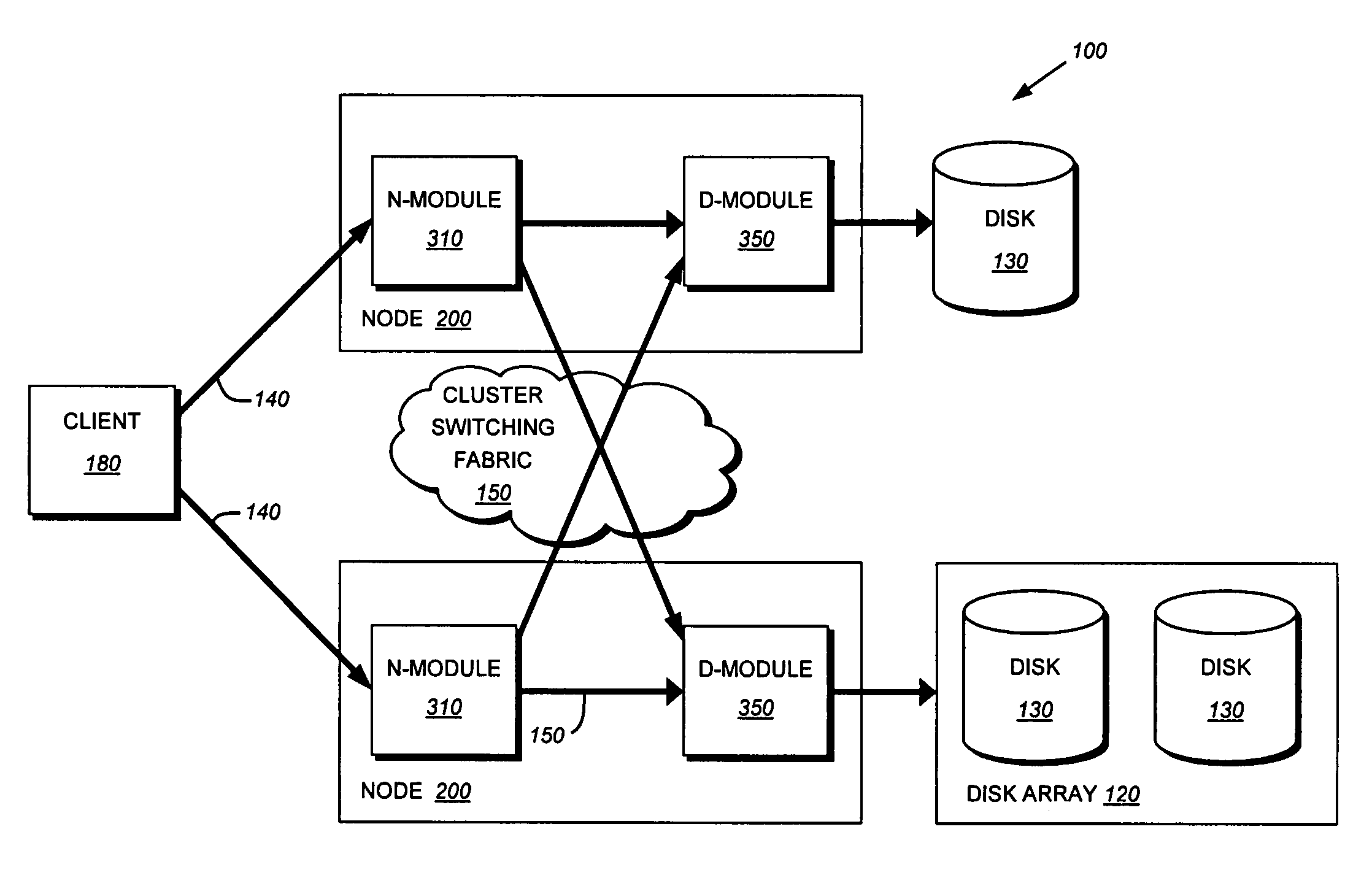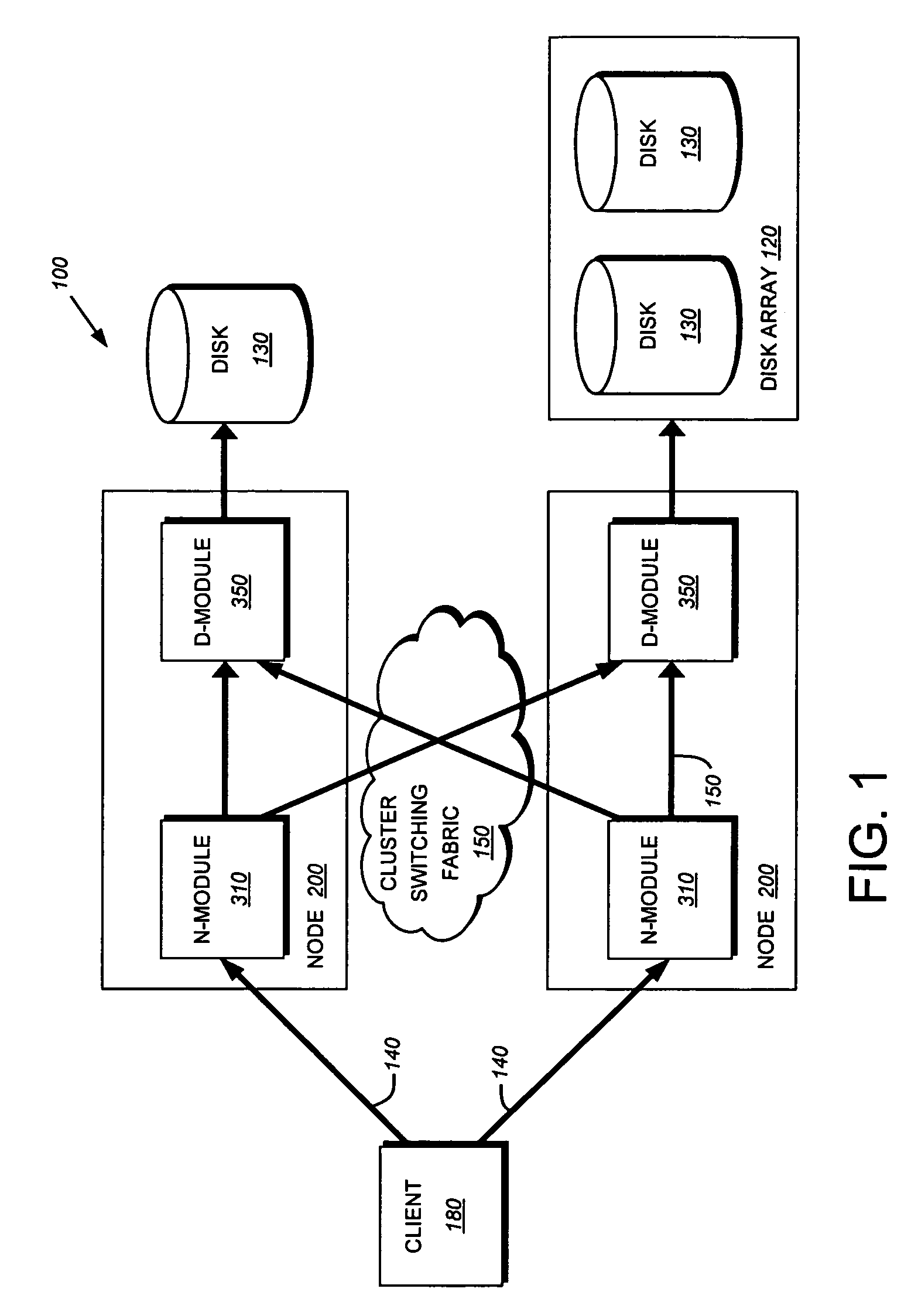System and method for utilizing sparse data containers in a striped volume set
a data container and sparse technology, applied in the field of storage systems, can solve the problems of increasing the latency of serving data, affecting the efficiency of re-striping operations, and affecting the speed and performance of serving data, so as to facilitate the processing of re-striping operations and facilitate re-striping operations. , the effect of facilitating re-striping operations
- Summary
- Abstract
- Description
- Claims
- Application Information
AI Technical Summary
Benefits of technology
Problems solved by technology
Method used
Image
Examples
Embodiment Construction
A. Cluster Environment
[0035]FIG. 1 is a schematic block diagram of a plurality of nodes 200 interconnected as a cluster 100 and configured to provide storage service relating to the organization of information on storage devices. The nodes 200 comprise various functional components that cooperate to provide a distributed storage system architecture of the cluster 100. To that end, each node 200 is generally organized as a network element (N-module 310) and a disk element (D-module 350). The N-module 310 includes functionality that enables the node 200 to connect to clients 180 over a computer network 140, while each D-module 350 connects to one or more storage devices, such as disks 130 of a disk array 120. The nodes 200 are interconnected by a cluster switching fabric 150 which, in the illustrative embodiment, may be embodied as a Gigabit Ethernet switch. An exemplary distributed file system architecture is generally described in U.S. Pat. No. 6,671,773 US 2002 / 0116593 titled METHO...
PUM
 Login to View More
Login to View More Abstract
Description
Claims
Application Information
 Login to View More
Login to View More - R&D
- Intellectual Property
- Life Sciences
- Materials
- Tech Scout
- Unparalleled Data Quality
- Higher Quality Content
- 60% Fewer Hallucinations
Browse by: Latest US Patents, China's latest patents, Technical Efficacy Thesaurus, Application Domain, Technology Topic, Popular Technical Reports.
© 2025 PatSnap. All rights reserved.Legal|Privacy policy|Modern Slavery Act Transparency Statement|Sitemap|About US| Contact US: help@patsnap.com



